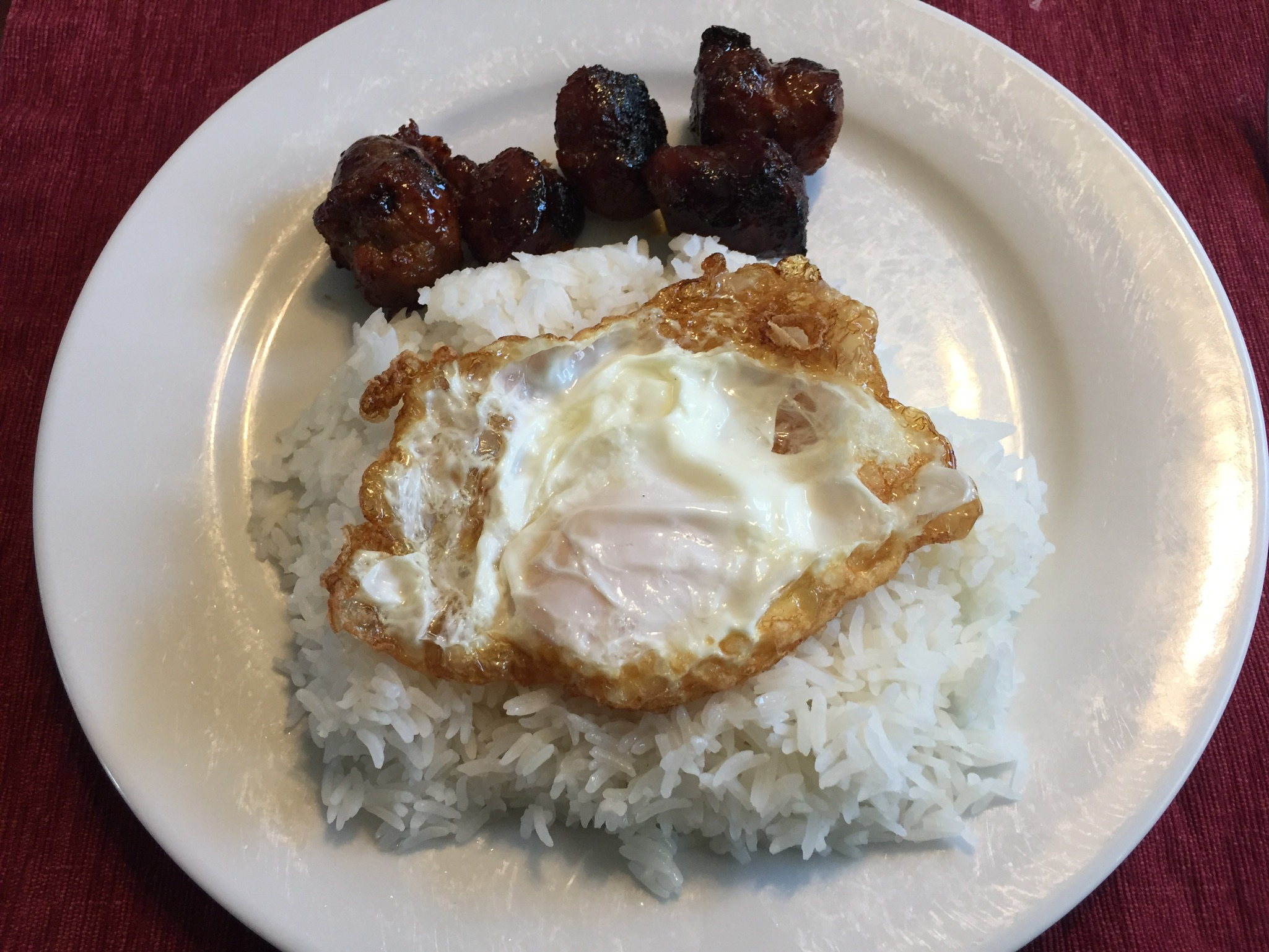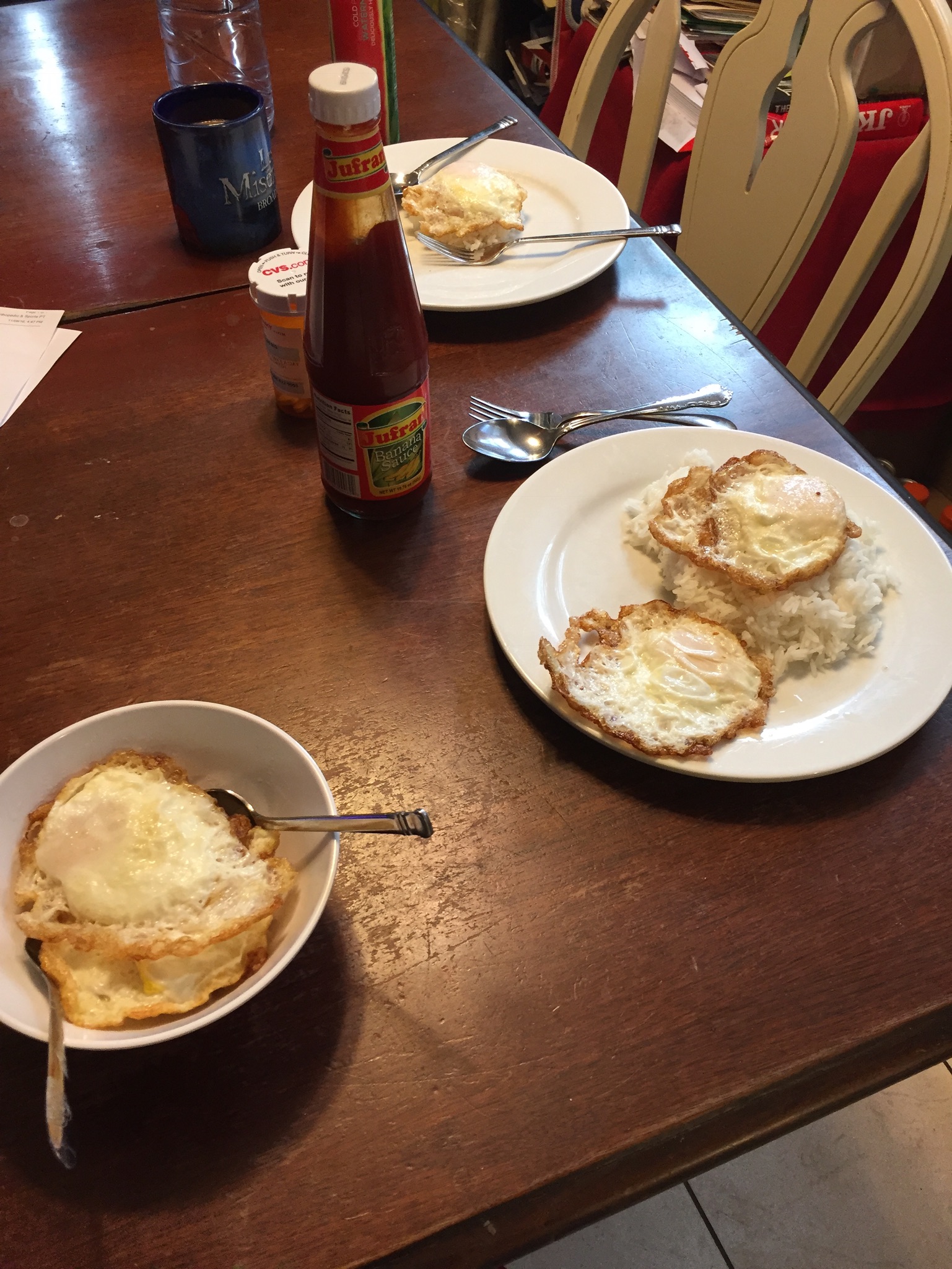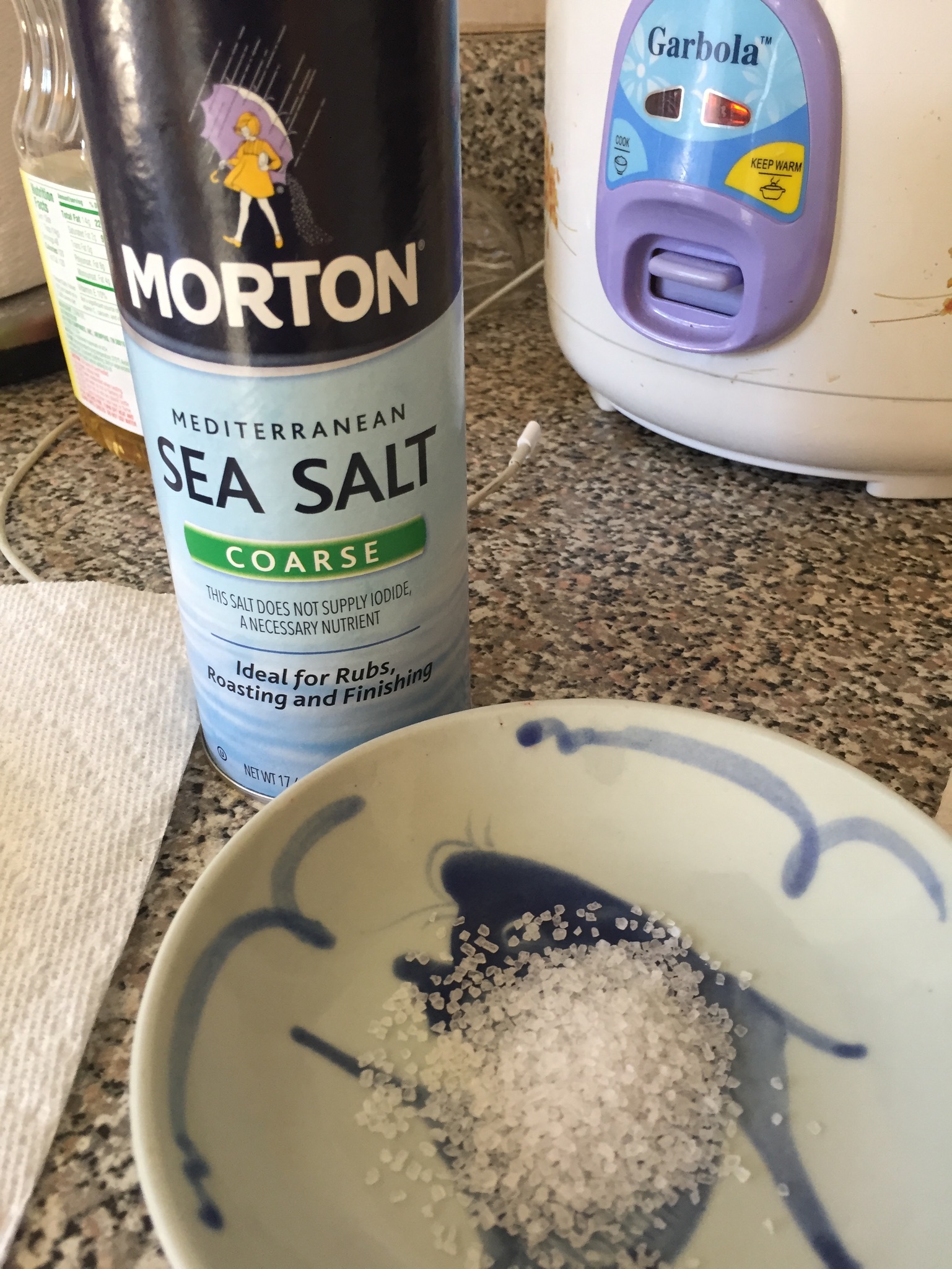Via Montebello, 66, Lazio, Rome, Italy. Tel: (06) 3249217715
While enjoying all of the freshly made Italian cuisine, by the fifth day of our Roman adventure, we – well, I, at least – began craving something different on our palates and by different, as an Asian and lifelong rice-eater, I mean rice and some kind of ulam (Tagalog for dish); something from home, like Adobo or Afritada, on top of steamed white rice or some deep-fried fish (the saltier the better, of course) served with sinangag (garlic fried rice).
So, to that end, I jumped online and searched for the nearest Asian restaurant. Originally, I searched for a Chinese spot; not craving for Japanese, Korean, Thai, Indian and not even thinking a Filipino joint would be anywhere nearby. I found several but, to be honest, I wasn’t sure, even with Google Maps, if they were easy to get to from our hotel. More importantly, I also had no way of knowing if the 3 1/2 to 4 1/2 star reviews some of these restaurants got were accurate or not. I was raised in Hong Kong. Gastronomically, that’s a blessing and a curse. Having lived in there for sixteen years and eaten some of the best Chinese food in the world, I’ve become a bit of a Chinese food snob. Sorry.
Anyway, back to the restaurant at hand.
Among the search results, there was a restaurant called Asian Delight. It got excellent reviews and was billed as “home cooking Filipino food.” That settled it. My wife and I widened our eyes and said, “Let’s go!” So, we put on our shoes and, with our son in tow, left the hotel and hailed a taxi. We told the driver “Via Montebello, sessantasei.” In minutes we were there and discovered that Asian Delight is actually only a few blocks and one roundabout from where we were staying, Hotel Quirinale on Via Nazionale. We hadn’t yet been in this neighborhood on this trip but our excitement levels escalated and we knew we were in for a treat when we saw a small Filipino flag flying at the eatery’s door.
Asian Delight is a small place with seven or eight booths lining the side walls and a small counter in the middle of the room. At the counter, are three stools probably for the solo diners. Directly opposite the door, sat Chris, a Filipino from Samar who has been living in Italy for six years. His Italian has a Filipino accent to it and his English has what almost amounts to a Portuguese one. (Is that what happens when Tagalog marries Italian? Hmm.) And Chris’s Italian sounds, well, Italian like how one of my ex-girlfriend’s father sounded when he and his sister talked in their native tongue at holiday meals.
Enticing customers like a carnival barker at the town fair (think Gordon McCrae in Carousel), Chris is as much entertainer as he is proprietor. He runs Asian Delight with his Kuya (Tagalog word for ‘older brother’) Betts in the kitchen and another cook, who in uncanny fashion resembles Manny Pacquiao, the boxing champ, congressman, and hero of The Philippines. Ironically and iconically, there is a large sketch print of Pacquiao on one of the side walls overlooking a corner booth.

Manny Pacquiao watches over the diners at Asian Delight
The menu at Asian Delight offers Chinese dishes and, of course, Filipino ones. We treated ourselves to some of the Filipino food and, to my son’s delight, there’s an entire section in the menu devoted to ‘egg rice.’ These are silog options; dishes like Tapsilog, Bangsilog, Ribsilog and, of course, his favourite, Longsilog. Basically, these are dishes made up of garlic fried rice (sinangag, hence the si), fried sunny side up egg (itlog means egg in Tagalog, hence the log) and some kind of meat. Tapsilog is beef tapa with garlic friend rice and fried egg. Bangsilog is the same but with fried bangus (white fish). Longsilog uses Filipino sausage called longanisa. The sinangag at Asian Delight is a little different than how I’ve had it at other restaurants. Most places and houesholds will fry chopped garlic and mix it into the rice in the frying pan. Some places will crown a lump of white rice with fried garlic. At others, the rice is browned in the frying process with browned garlic mixed in. At Asian Delight, it’s slightly browned with garlic mixed in but there are also slivers of sliced or ripped scrambled egg. This deviation from how sinangag is usually made was not an unpleasant twist.
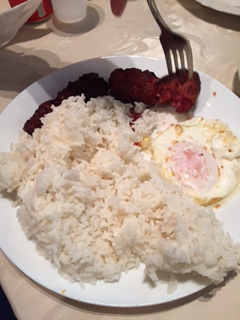
Longanisa at Asian Delight, Rome, Italy
As for the Longsilog itself, Rome must have the brightest gold-coloured egg yolks around. Cooked perfectly with the yolk covered by a white sheen without being cooked solid, the egg oozed into the rice as my son sliced the egg and mixed the two together. It made me imagine what Filipino risotto might be like. The longanisa was sweet – a little too sweet than I’ve ever had – but it was softly cooked and offered a nice cut and blend with the saltiness of the rice and egg. The sausage was also skinless. This wasn’t the first time I’ve seen skinless Filipino sausage but it was the first time I’ve tasted skinless Filipino sausage. To my son’s pleasure, it beats out the usual skinned sweet longanisa we eat in the US.
We also ordered a plate of Pork Dumplings.
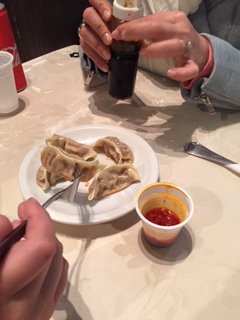
Pork Dumplings with a dish of hot sauce
They were tasty and didn’t make or break the meal but they weren’t anything that knocked our socks off. They were a basic meat dumpling like the kind you can find in the freezer section of your local Asian grocery store. I wouldn’t order them again but, if someone did, I wouldn’t turn them away and I’d even have one or two bites.
For the rest of the meal, we ordered Pork Sinigang (Tamarind Stew) (pictured below, left) and Lechon Kawali (deep fried pork belly) (pictured below, right). Before we go on, you should know that Filipinos like their dips and sauces. There’s toyo (soy sauce) with or without chili; suka (vinegar), with or without chili peppers; bagoong, a fish or shrimp paste; and Mang Tomas, a condiment often used for lechon (roasted pig) and other grilled or barbecued meats. I guess it could be considered a kind of Filipino barbecue sauce or meat-based mayonnaise of sorts. And then there’s patis, a fish sauce that is used in many different kinds of Asian cooking from Filipino to Thai to Vietnamese to Indonesian. Often used in the cooking, patis is also used as a dip or condiment however in most restaurants it’s not readily available to the customer. At Asian Delight, though, Chris gladly brought out a small dish of patis for my wife when she asked for it. As for how the two dishes tasted – delicious. Part of their tastiness might have been due to the my palate’s need for different stimulation than what I’d been getting. The sinigang and lechon kawali weren’t any better – and they certainly weren’t worse – than any I’d had before but they were spot on and tasted just like home. The sinigang had a nice bite to it thanks to the green chili that was added, something that is common with this dish but not something we always do at home. The lechon kawali was tender and the pig skin crispy without being burnt or overdone.

Pork Sinigang

Lechon Kawali with a dish of Mang Tomas
During our meal, thanks to all the sharing we were doing (a normal part of our meals, as a family, and among Filipinos), my son’s two longanisa turned into one so we ordered a side dish of longanisa so he could round up and balance his ‘Filipino egg risotto’ with the meat. The side order came with three sausages on a plate which I thought was generous. Comparing it to our dining experiences in the US, we got one more sausage than we’d get, say, a our local diner if we’d ordered a side dish of a regular pork breakfast sausage.
To round out my meal, I ordered a beer. Asian Delight offers San Miguel and Red Horse, two staple brews from The Philippines.
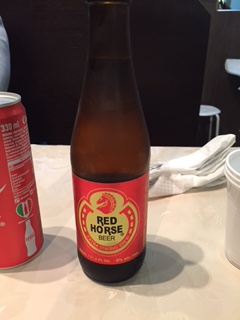
Red Horse Beer, one of the staple brews from The Philippines
It’d been ages since I’d had a ‘San Mig’ so, naturally, I ordered one. Unfortunately, they were out of it so I settled for a Red Horse, which didn’t disappoint. For those of you who haven’t tried it, it’s akin to Heineken or Tsingtao.
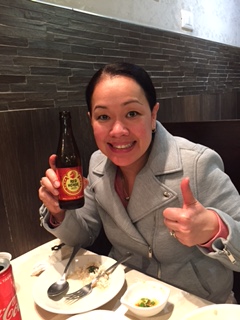
My wife, giving a thumbs up to the beer and to Asian Delight
At the end of the meal, we promised Chris that we’d return and we did, the following night, after our excursion to Venice. Asian Delight closes at 10pm and we got there at 9:45pm. There were two customers left who were paying and Chris and company were starting to clean up and shut down. We were able to get an order to go and he threw in a free order of white rice. My wife ordered Pancit Canton Bihon, which is a Filipino-style Lo Mein with added rice or vermicelli noodles to the lo mein noodles. My son ordered Longsilog again and I went with the day’s special and one of my all-time favorite Filipino dishes, Kalderatang Kambing (Filipino goat stew).
There are other dishes on their menu, of course – Sisig, Adobo, Halo Halo, Leche Flan, Dinaguan and others – that we didn’t get to try but one doesn’t go to Rome to try Filipino food, after all. You can, though, bet your last Euro that the next time we’re in Rome (and we will be back because my son threw in only one coin into The Fountain of Trevi which, according to legend, means we’ll return) and we’re craving a different taste to our palates a trip to Asian Delight will be added to our itinerary.
Asian Delight’s name is spot on. The food definitely satisfied the change my taste buds needed and it did so at a reasonable price. The meal we had was around 30 Euros (about US$37), which is about the same we’d pay for the same meal at Pandan in Bloomfield, New Jersey. In addition to the tastiness of the food and the charm from our host, Chris, Asian Delight triggered memories, as food does, of summers in Manila and family meals in Hong Kong. The emotional and psychological warmth was more than welcomed and a pleasant surprise to our impromptu Filipino dinner. Being there, I was also offered the opportunity to speak a fifth language on our vacation and practice my Tagalog, which is functional but far from good. (In and around our trip, I’d already had the chances to speak English (which I speak fluently), Italian, French and Spanish – none of which I speak fluently but can manage in small doses and in a pinch.)
Chris was a joy to meet, as well, and the coziness of the place offers a certain intimacy, without ignoring personal boundaries, that made me feel like we – the various customers, even though we had our own meals and conversations, were all together enjoying the deliciousness of the natural fusion that is Filipino food and the happy, welcoming charm that is the Filipino spirit. So, for anyone who needs a change of pace from the deliciousness of Italian cuisine but, especially, for my fellow Filipinos, do pay Asian Delight a visit if you find yourself in Rome. You won’t be disappointed. Oh, and say “hi” to Chris for me.
Rating: 1 1/2 bites
0 bites = Don’t bother. I suffered for you.
1/2 bite = I enjoyed it enough – I had to eat something, after all – but I wouldn’t recommend it.
1 bite = Good. I’d have it again but I probably wouldn’t go out of my way to get it.
1 1/2 bites = Very good/super tasty. I’m definitely going back and I’m bringing friends. If I weren’t married, it’s somewhere I’d take a first date to. That’s how good it is.
2 bites = Unique, I’ve never had (and probably won’t ever have) better than this, this is what I’d want if I were going to be executed and I could have whatever I wanted for my last meal, Epicurean Orgasm!


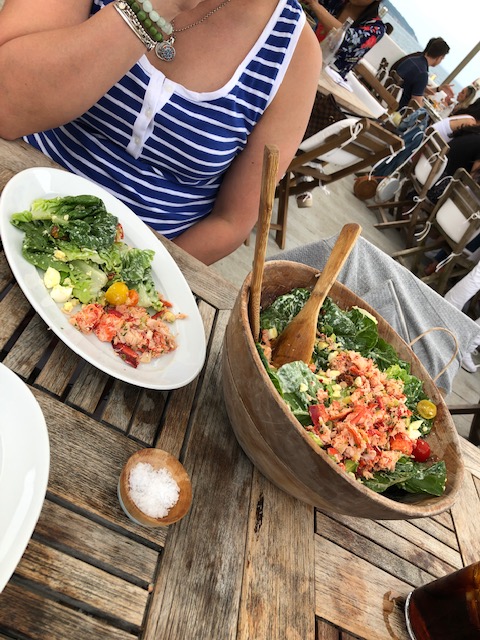
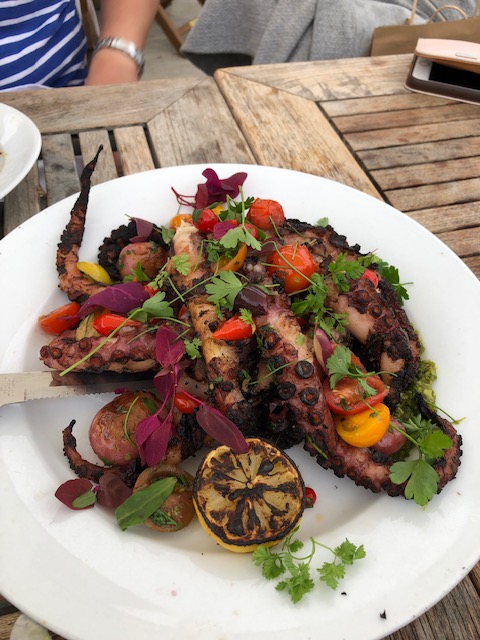
 (Photo courtesy of 8list.ph)
(Photo courtesy of 8list.ph)






